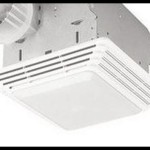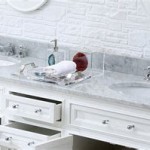How To Clean Bathroom Grout Tiles
Bathroom grout, the material that fills the spaces between tiles, can become discolored and stained over time due to exposure to moisture, soap scum, and mildew. Regular cleaning is essential to maintain a clean and hygienic bathroom environment. This article provides a comprehensive guide on how to clean bathroom grout tiles effectively, restoring their original appearance and preventing future stains.
Step 1: Prepare the Area
Before embarking on the cleaning process, it's crucial to prepare the bathroom area to ensure a safe and efficient cleaning experience. Start by clearing the bathroom floor and surrounding surfaces of any obstacles or items that could hinder the cleaning process. This includes moving toiletries, towels, and other bathroom accessories. Removing these items creates ample space to work and prevents accidental spills or damage.
Next, protect surrounding surfaces from potential damage. Use a plastic drop cloth or painter's tape to cover any areas adjacent to the grout that you don't want to get wet. This step is crucial to prevent the cleaning solution from staining or damaging nearby surfaces. After preparing the area, it's time to gather the necessary cleaning supplies.
Step 2: Choose the Right Cleaning Solution
Selecting the appropriate cleaning solution is crucial for effectively removing dirt, stains, and mildew from bathroom grout. There are numerous commercially available grout cleaners, each with its unique formula and effectiveness. However, if you prefer a more natural approach, use baking soda and white vinegar as a homemade cleaning solution.
Baking soda is a mild abrasive that helps lift dirt and grime, while white vinegar acts as a natural disinfectant and helps remove stains and mildew. To create this solution, mix equal parts baking soda and white vinegar in a bowl. It's important to note that combining baking soda and vinegar creates a fizzing reaction, so work in a well-ventilated area and wear gloves to protect your hands.
Step 3: Apply the Cleaning Solution
Once the cleaning solution is ready, it's time to apply it to the grout lines. Use a toothbrush with stiff bristles or a grout brush to apply the solution directly to the grout. Ensure the solution is evenly distributed along the grout lines without getting on the tiles themselves. The toothbrush or brush's stiff bristles will help scrub the solution into the grout, effectively loosening dirt and grime.
For tougher stains, you can use a grout cleaning tool that features a scrub brush attached to a handle. This tool allows you to reach areas that are difficult to access with a regular toothbrush. Apply the cleaning solution to the stubborn stains and scrub the area using firm, circular motions. Let the solution sit on the grout for a few minutes to allow it to work its magic. Then, use a damp cloth or sponge to wipe away the cleaning solution and any loosened debris.
Step 4: Rinse and Dry
After applying the cleaning solution and scrubbing the grout, it's essential to rinse the area thoroughly to remove any remaining residue. Use a damp cloth or sponge to wipe away the cleaning solution and any loosened dirt. For a more thorough rinse, you can use a spray bottle filled with clean water and spray the area liberally. Make sure to wipe away all traces of the cleaning solution, as any residue will likely attract dirt and grime, defeating the purpose of cleaning the grout.
After rinsing, dry the grout using a clean, dry cloth or towel. Thoroughly dry the grout lines to prevent mold and mildew growth. You can also use a hair dryer on a low setting to speed up the drying process.
Step 5: Seal the Grout
Once the grout is clean and dry, consider sealing it to protect it from future stains and dirt. Grout sealant forms a protective barrier that prevents water and dirt from penetrating the porous grout. Several types of grout sealants are available, including water-based, solvent-based, and epoxy-based sealants. Each type has its pros and cons in terms of application, durability, and cost.
The application process typically involves applying the sealant evenly to the grout lines using a brush or roller. Allow the sealant to dry completely according to the manufacturer's instructions before using the bathroom. Sealing the grout not only protects it from stains but also makes cleaning easier in the future.
Remember, regular cleaning and sealing are essential to maintain clean and hygienic bathroom grout. By following these steps, you can keep your bathroom grout looking its best and prevent stains and discoloration.

How To Clean Grout Cleaning Stains

How To Clean Mold In Shower Grout Tips And Tricks Certified Care

3 Top Secret Tricks For Cleaning With Vinegar Making Lemonade

How To Clean Grout In Your Shower Alpine Carpet Cleaning

How To Clean Grout Tile Cleaning Tips Simply Spotless

The Ultimate Guide To Cleaning Grout 10 Diy Tile Cleaners Tested Bren Did

How To Clean Grout In Shower Simple S Keep Your Bathroom Tiles Gleaming Express Co

How To Clean Refresh And Seal Your Grout Easily Ly

How To Clean Grout Dirty In Five Minutes Without Using Bleach Express Co

What To Avoid When It Comes Proper Tile Cleaning The Grout Medic
Related Posts







